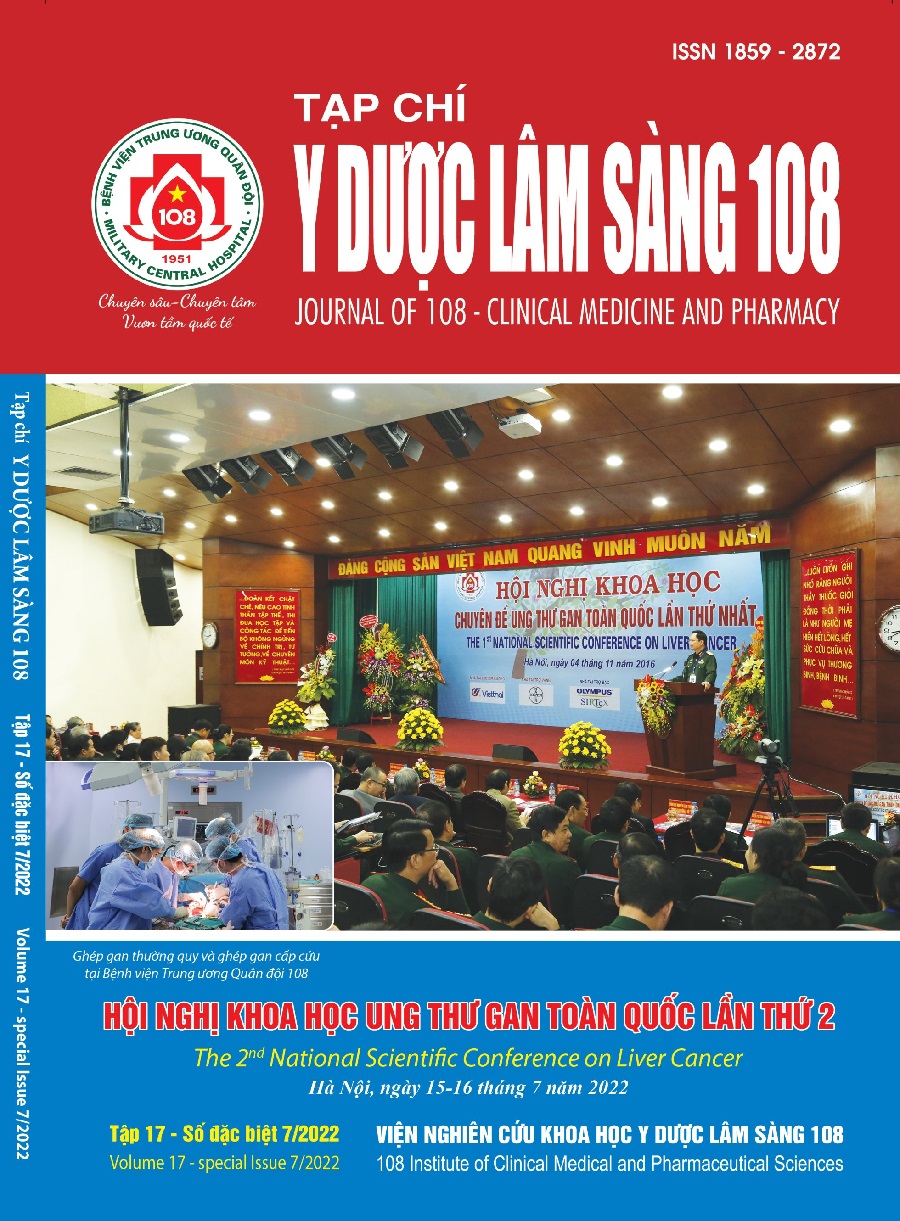Outcomes of stereotactic body radiotherapy for patients with residual hepatocellular carcinoma after transcatheter arterial chemoembolization at 108 Military Central Hospital
Main Article Content
Keywords
Abstract
Objective: To evaluate the early result and toxicity of stereotactic body radiotherapy (SBRT) in hepatocellular carcinoma patients with residual tumor after transcatheter arterial chemoembolization (TACE). Subject and method: A non-control interventional study with 36 residual hepatocellular carcinoma patients who were treated by SBRT. A total dose of 27.5 - 50Gy was delivered in 3 - 5 fractions. Treatment response, local control rate, overall survival (OS) rate and toxicity were evaluated. Result: The mean tumor diameter was 7.1 ± 2.3cm. Tumor complete and partial response was 55.8% and 31.0% respectively. The median follow-up time was 15.5 months. The 1 and 2-year tumor control rate was 73.3% and 61.1% respectively. The 1 and 2-year OS rate was 83.7% and 52.7% respectively. Most of the toxicities were grade 1 - 2 including fatigue 25.0%, nausea 16.7% and abdominal pain 13.9%, 1 patient (2.8%) had liver failure grade 3. Conclusion: SBRT has achieved a high tumor control rate in patients with residual hepatocellular carcinoma after TACE with minor toxicity.
Article Details
References
2. Su TS, Liang P, Liang J et al (2017) Long-term survival analysis of stereotactic ablative radiotherapy versus liver resection for small hepatocellular carcinoma. International Journal of Radiation Oncology Biology Physics 98(3): 639-646.
3. Bujold A, Massey CA, Kim JJ et al (2013) Sequential Phase I and II trials of stereotactic body radiotherapy for locally advanced hepatocellular carcinoma. JCO 31(13): 1631-1639.
4. Kang JK, Kim MS, Cho CK et al (2012) Stereotactic body radiation therapy for inoperable hepatocellular carcinoma as a local salvage treatment after incomplete transarterial chemoembolization: A single-institution phase 2 trial. Cancer 118(21): 5424-5431.
5. Paik EK, Kim MS, Jang WI et al (2016) Benefits of stereotactic ablative radiotherapy combined with incomplete transcatheter arterial chemoembolization in hepatocellular carcinoma. Radiat Oncol 11(1): 22.
6. Jacob R, Turley F, Redden DT et al (2015) Adjuvant stereotactic body radiotherapy following transarterial chemoembolization in patients with non‐resectable hepatocellular carcinoma tumours of ≥ 3cm. HPB 17(2): 140-149.
7. Jang WI, Kim MS, Bae SH et al (2013) High-dose stereotactic body radiotherapy correlates increased local control and overall survival in patients with inoperable hepatocellular carcinoma. Radiat Oncol 8(1): 250.
8. Yao E, Chen J, Zhao X et al (2018) Efficacy of stereotactic body radiotherapy for recurrent or residual hepatocellular carcinoma after transcatheter arterial chemoembolization. BioMed Research International: 1-6.
9. Zhong NB, Lv GM, and Chen ZH (2014) Stereotactic body radiotherapy combined with transarterial chemoembolization for huge (≥ 10cm) hepatocellular carcinomas: A clinical study. Molecular and Clinical Oncology 2(5): 839-844.
 ISSN: 1859 - 2872
ISSN: 1859 - 2872
